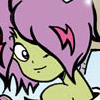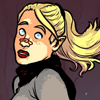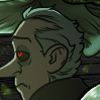
Finding new webcomics is a daunting business. As any two people what their favorite webcomic is, and — outside of “What’s a webcomic?” — you’re likely to get two very different answers. There are many, many webcomics out there, almost as many as the grains of sand on the beach, and sifting through them is a chore. We often settle on comics that are recommended to us, but rarely do we find a gem out there on our own.
Recommending webcomics online has its challenges, too. The nature of the internet means that anyone can just download a panel and post it anywhere. The problem, though, is when no one gives credit or a link to the original comic. Webcomic creators collect money mainly through advertising, and losing revenue when someone posts a panel outside their site can really hurt a struggling artist… and that’s something that most webcomic readers don’t want. Things came to a head not too long ago when someone developed a webcomic reader app, only to become the target of angry webcomic creators and supporters.
At the same time, though, webcomic creators, especially those with 20K viewers or less, need all the publicity they can get. There’s so much out there competing for our eyeballs.
Enter Just The First Frame.
Creator Henry Kuo put together a fairly elegant system: post a small snippet of a comic. (Or “just the first frame,” as the URL says.) If it manages to catch your eye, you click on the image and it directs you to the site. If you only want to read the comics that are popular, there’s a handy feature that sorts the comics based on how many people are reading it. The readers get a simple, visual way of browse numerous webcomics without leaving the main page. The webcomic creator doesn’t lose revenue, because the entire comic is only available on their site. Everyone wins!
I recently asked the hard working site master about the inner workings of Just The First Frame. Here’s what he had to say:
WCO: With the number of webcomics out there likely beyond the tens of thousands, do you find maintaining your site to be a little daunting?
Henry Kuo: I’m only including and updating comics that have been suggested to me, so it stands at 586 right now. Early on, I had concerns about how I would maintain the site as the number of comics quickly grew, but every once in a while, I would find something simple to make the process quicker, and I’d be confident I could keep up even if it grew to X amount of comics. I think I could comfortably handle about 1000 right now, but beyond that, I’m not completely sure what I would do.
WCO: Have you ever had to reject webcomics from the site based on content, artistic skills, etc.?
Kuo: The only comics I’ve rejected are ones that are NSFW. Other than that, I don’t really want to be a gatekeeper on what gets included and what doesn’t. I just don’t feel it’s my right to say yay or nay based on my personal opinions. As long as it’s a web comic, I’m more than happy to include it. I did add a link beneath each panel that lets you hide specific comic series, so everyone can do their own personal filtering.
WCO: What has the response been like from webcomic creators?
Kuo: I’m honestly very honored when an artist suggests their comic to my site, and I’ve received nothing but gratitude back in return. In the beginning, I was ready to remove the site entirely if there was any negative feedback, but the reaction was quite the opposite and I was and still am very humbled by it.
Actually, there were a few complaints about the use of the word “frame” instead of the correct term “panel”, and I take complete responsibility for that error, but I just kind of liked the alliteration of the F’s and kept it, though I’ve always been open to change it.
Read the rest of this entry →
























































































































